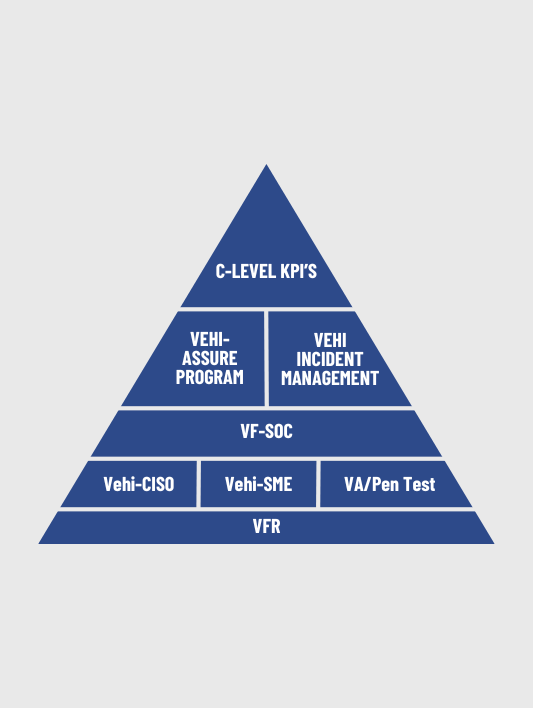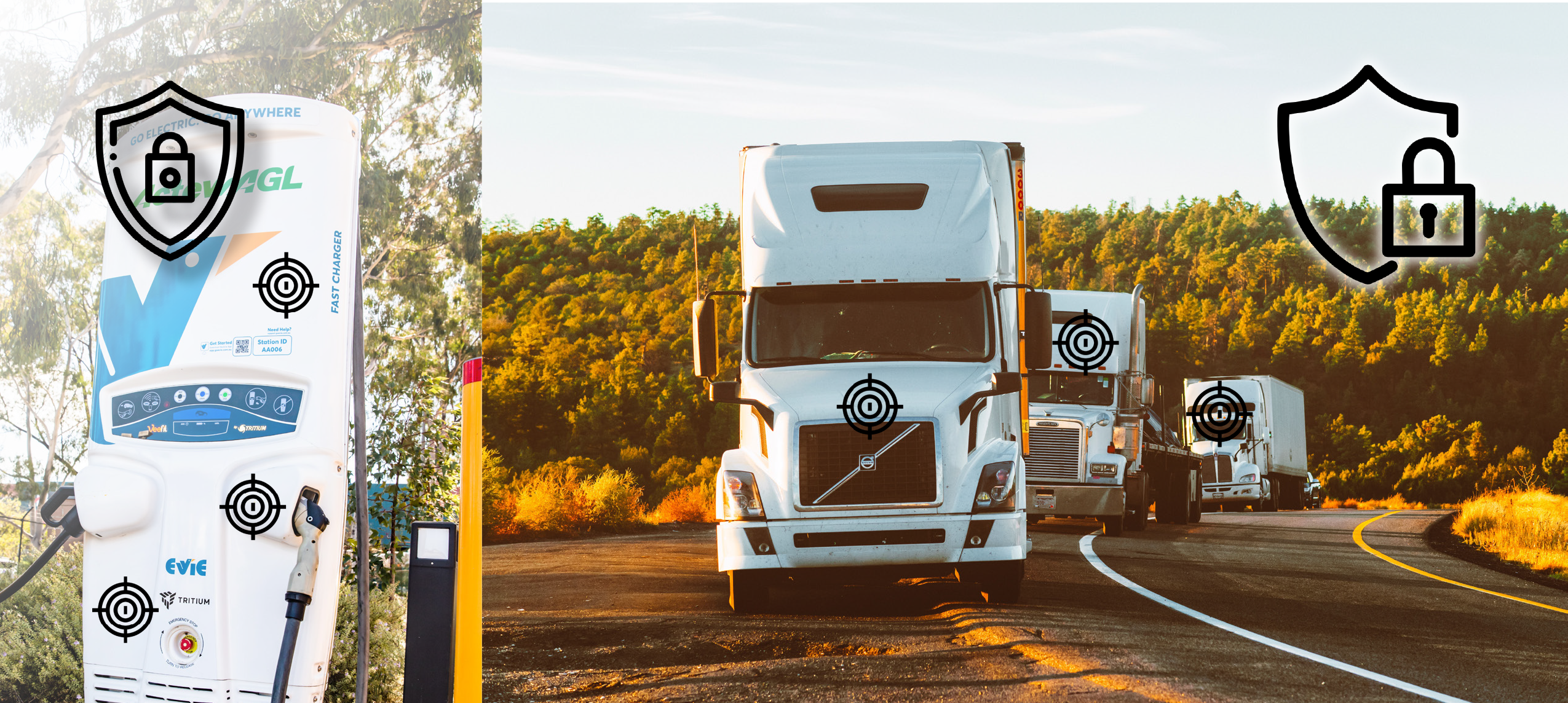Cork, a 5,000-year-old material, is emerging as a critical enabler for advanced air mobility. From NASA spacecraft to BMW EVs and the future of eVTOLs, this podcast episode reveals cork’s extraordinary performance, sustainability, and growing role in the world’s most innovative transportation solutions.
Building Connected Mobility: Clint Harper on the Next Steps for Airports
In part two of his conversation on reinventing airports, Clint Harper explores how aviation infrastructure can transform into multi-modal mobility hubs. By linking air taxis with rail, buses, and micromobility, airports can serve as true connectors in sustainable transport networks.
The Ways We Move: Reinventing the Future of Airports with Clint Harper
In this episode of The Ways We Move podcast, Clint Harper, a military airport manager and urban planner, explores how airports can embrace advanced air mobility and evolve into multi-modal hubs. Learn how resilient infrastructure, community engagement, and smart economics can help airports lead the way in supporting electric aviation and regional connectivity.
The Future of AAM Infrastructure Insights from Rex Alexander — Part 2
On The Ways We Move podcast, guest Rex Alexander talks about how advanced air mobility (AAM) infrastructure is changing how we see and conceptualize urban air mobility (UAM) and regional air travel, challenges, regulatory updates. Most importantly, a strong, safe, and robust infrastructure will allow for a cleaner and more efficient future of air travel. Find out more about what the future of air travel looks like from Mr. Infrastructure himself!
The Ways We Move: The Backbone of AAM with Rex Alexander
There are more solutions than obstacles. Nicolas Zart
In this special episode of The Ways We Move, I have the privilege of sitting down with Rex Alexander, an old friend and one of the most respected professionals working in aviation infrastructure today, building the future of advanced air mobility (AAM). Rex is the founder of Five Alpha, also known as Mr. Infrastructure, a title that fits his great knowledge of the industry. With military aviation and helicopter, emergency, ambulance, and commercial aviation expertise, he has become the person industry leaders call when they need honest answers and trusted guidance on heliports, vertiports, and the rapidly growing world of multiport operations.

We reflect on how far the conversation around infrastructure has come since 2018, when the standards and policies governing heliport and vertiport operations truly began to evolve. Rex shares his first-hand perspective on the long series of meetings with the FAA and other agencies, collaborations that have helped push standards forward and align policies across not only the United States, but also Europe and global regulatory bodies such as EASA and ICAO. As regulations move forward, the need for common frameworks and mutual recognition becomes more urgent.
Advanced Air Mobility, Humble Beginnings, Amazing Potential
The discussion explores the practical realities behind the promise of electric vertical take-off and landing (eVTOL), electric short take-off and landing (eSTOL), and finally, electric conventional take-off and landing (eCTOL). We highlight the difference between prototype and commercial certification, the integration of the various aircraft operations, and the harmonization of air traffic as great challenges, as well as the keys to real-world deployment. Rex explains why the United States faces particularly complex hurdles; land use and infrastructure oversight are split between federal, state, and municipal authorities, creating a patchwork of rules and requirements. In contrast, many other countries have much more centralized systems, which can streamline progress but also present new sets of questions.

The Rebirth of Regional Airports for AAM
Rex and I talk about the crucial roles regional airports play, especially as the industry looks beyond just vertiport sites and envisions multiport networks. These will enable not only eVTOLs but also eSTOL and eCTOL aircraft, paving the way for a more holistic and inclusive system of operations. Rex emphasizes that success in building AAM infrastructure is not just about engineering or policy, but about understanding what each community and operator truly needs.
Throughout our conversation, it becomes clear that municipal engagement is essential. The future of flight will depend on strong partnerships at every level, and cities must be included in the vision from day one. As Rex says, we need solutions that are practical, scalable, and shaped by the realities on the ground.
Rex’s Journey into Aerospace
Rex’s journey began early, with his hands on flight controls before he turned fifteen, moving through fixed wing and rotorcraft, from military service to the offshore sector, and finally, to leading the charge on infrastructure best practices that have become industry standards. He is someone who brings not just technical expertise but a sense of stewardship for safety, reliability, and the broader mission of connecting people through aviation.
There is no shortcut to building trust in a field as safety-critical as aviation. Voices like Rex’s—honest, experienced, and deeply committed—are essential as we create infrastructure that will sustain the next generation of aviation. Our conversation is full of insight on where we are, how we got here, and what it will take to ensure AAM infrastructure serves everyone: operators, regulators, and the communities we all aim to connect.

We wrap up part one, looking forward to future episodes where we continue the discussion on global standards, community engagement, and what it means to build for longevity rather than hype. Rex, thank you for the work you do, for your guidance, and for always taking my calls when I need answers that cut through the noise.
Please share your thoughts, comments, and questions. Subscribe to The Ways We Move for more in-depth conversations with leaders who are shaping the future of mobility and infrastructure
Cybersecurity in AAM: Protecting the Journey from User to Aircraft | The Ways We Move podcast
There are more solutions than obstacles. Nicolas Zart
As advanced air mobility (AAM) continues to connect cities, airports, and communities with electric and autonomous aircraft, the issue of cybersecurity takes center stage. In a recent episode of The Ways We Move podcast, I sat down with AJ Khan, CEO of Vehiqilla, to explore the critical challenges and solutions for securing every link in the mobility chain, from the individual user to the aircraft, airport, and beyond.

Why Cybersecurity Matters More Than Ever
The aviation industry is in the midst of a digital transformation. From cloud-based flight planning to real-time passenger services and predictive maintenance, nearly every aspect of modern aviation now depends on interconnected digital systems. This connectivity brings efficiency and innovation, but also exposes new vulnerabilities. In 2025, cyberattacks on airlines and airports are at an all-time high, with incidents ranging from ransomware and data breaches to denial-of-service attacks that can disrupt operations and compromise safety.
AAM magnifies these risks. Unlike traditional aviation, AAM ecosystems are deeply integrated, blending cloud software, autonomy algorithms, aircraft hardware, and ground infrastructure. Every node—from user devices and mobile apps to vertiports and third-party service providers—represents a potential entry point for cyber threats.
The Expanding Attack Surface
AJ Khan emphasized that cybersecurity in AAM is not just about protecting the aircraft. “We have to secure the entire journey,” he explained. This means considering:
- User Devices: Mobile apps for booking and boarding are targets for data theft and fraud.
- Connected Vehicles: eVTOLs, eSTOLs, and eCTOLs rely on software updates, remote commands, and real-time data—all of which can be compromised if not properly secured.
Airports and Vertiports: As critical infrastructure, airports are increasingly targeted by hackers seeking to disrupt operations or gain unauthorized access to sensitive systems.

Cloud and Third-Party Providers: Many AAM operations depend on cloud-based services for navigation, scheduling, and maintenance. A vulnerability in any provider can ripple across the ecosystem.
Real-World Threats and Incidents
Recent years have seen a surge in aviation-related cyber incidents. From ransomware attacks that lock airport systems to GPS spoofing and communication interference, the risks are both diverse and growing. In 2024, for example, a cyberattack on Germany’s air traffic control agency disrupted IT infrastructure, while similar attacks have targeted airports across Asia and the Middle East.
The consequences are not limited to inconvenience. In AAM, where autonomy and safety intersect in dense urban environments, a single cyber failure can quickly become a safety-of-life event. A compromised scheduler could ground an entire fleet, while a spoofed GPS signal might steer an aircraft into restricted airspace.

Building Security from the Ground Up
Khan and I discussed the urgent need for a comprehensive, end-to-end approach to cybersecurity in AAM. This means:
- Designing for Security: Treating every connection as potentially untrusted and building security into systems from the earliest design phases.
Continuous Monitoring and Improvement: Regularly updating and patching software, monitoring for suspicious activity, and learning from incidents to strengthen defenses.
Industry Collaboration: Sharing threat intelligence and best practices across manufacturers, operators, airports, and regulators to stay ahead of evolving threats.

The Regulatory Challenge
While regulatory bodies like the FAA, EASA, and ICAO have established cybersecurity standards for traditional aviation, these frameworks often fall short for AAM and autonomous operations. The complexity of distributed, highly automated systems requires new approaches—such as adopting the NIST Cybersecurity Framework and developing standards tailored to AAM’s unique needs.
Trust, Safety, and the Future
Ultimately, the success of advanced air mobility depends on trust. Passengers, operators, and the public must have confidence that every part of the system—from user apps to aircraft and airports—is secure. As Khan noted, “Cybersecurity is not just an IT issue; it’s a safety and trust issue at the heart of the AAM revolution.”
As we look to a future where urban skies are filled with electric and autonomous aircraft, robust cybersecurity will be the foundation that enables safe, efficient, and resilient mobility for all.
Listen to the full conversation with AJ Khan of Vehiqilla on The Ways We Move podcast for deeper insights into the challenges and opportunities of cybersecurity in advanced air mobility.
For more The Ways We Move episodes, see here:
▶️ Watch on YouTube: https://www.youtube.com/@TheWaysWeMove 📺
🔊 Apple Podcasts: https://podcasts.apple.com/ca/podcast/the-ways-we-move/id1797599255 🔊
🎙️ Amazon Podcasts: https://music.amazon.com/podcasts/cd3349e1-275f-4691-ae38-f1b6a153d5e5/the-ways-we-move 🎙️
🎧 Listen on Spotify: https://open.spotify.com/show/4V0qe3eZqublwn6dasXWCf 🎧
📻 iHeart Radio: https://www.iheart.com/podcast/269-the-ways-we-move-268614085/ 📻
🌱 Buzzsprout: https://thewayswemove.buzzsprout.com/ 🗣️
📢 Subscribe for more insights into the future of mobility and support the show! https://www.buzzsprout.com/2428454/supporters/new 📡
The Ways We Move: Georgia Tech’s Prof. Marilyn Smith
Georgia Tech’s Prof. Marilyn Smith joins The Ways We Move podcast to explain aviation downwash, its challenges for advanced air mobility, and how research is driving safer, smarter eVTOL and vertiport solutions.
The Ways We Move, Leo Flight, Quietly Revolutionizing eVTOLs
Leo Flight is pioneering high-efficiency electric jet propulsion for eVTOLs, offering unmatched speed, range, and quiet operation. Their technology could transform urban air mobility, cargo drones, and defense applications. Learn how this U.S.-based innovator is pushing the boundaries of electric flight.
The Ways We Move speaks with Kia’s James Bell
Welcome to Episode 6 of The Ways We Move! Host Nicolas Zart sits down with James Bell, Head of Kia North America Communications, for a rare insider’s look at the electric vehicle revolution. From his days as an automotive journalist at Kelley Blue Book to guiding GM through its transformational years and now leading Kia’s communications, James shares hard-won lessons on:
What 18 months with the Kia EV6 taught him about real-world EV efficiency and consumer adoption.
The unspoken challenges of automotive innovation and infrastructure gaps.
Why the future of mobility hinges on storytelling as much as technology.
Tune in for a candid conversation at the intersection of media, policy, and cutting-edge EVs.
The Ways We Move podcast speaks with The Edge Company
Watch or listen to how The Edge Company offers an innovative solution for intrusion detection in both conventional aviation and advanced air mobility (AAM)!






